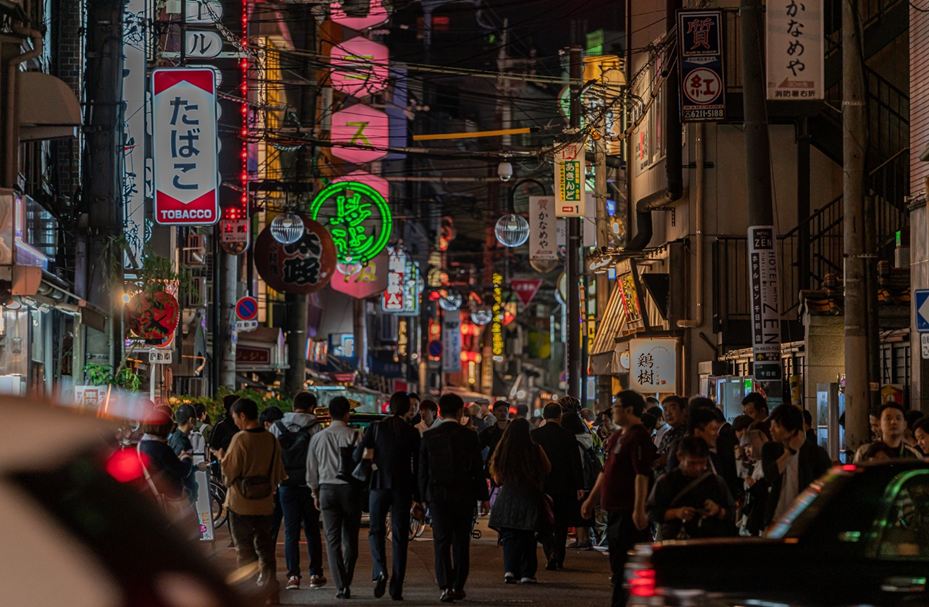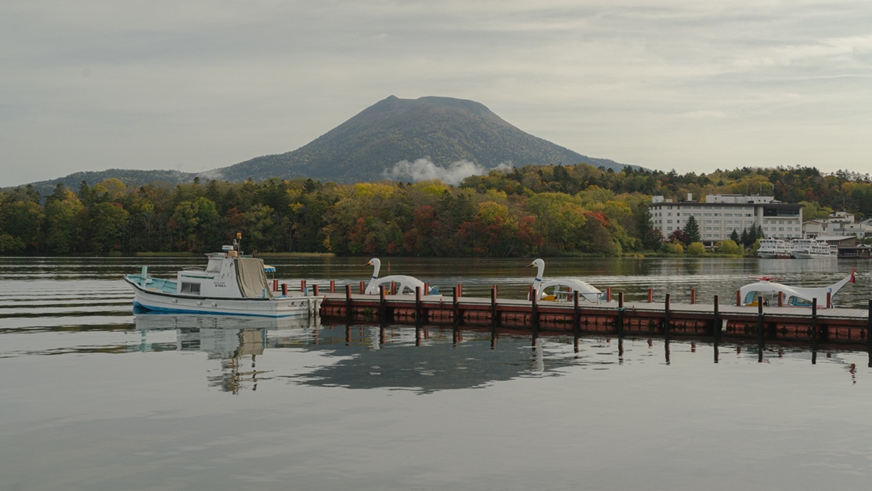
Much has been written about Japan’s so-called “Golden Route”, taking visitors from Tokyo to Kyoto to see much of this fascinating country’s most renowned sites. Today, I want to propose a new route: substituting Tokyo for Japan’s second city, Osaka, making a stopover in Kyoto, and ending in Eastern Hokkaido. This may seem like a curveball but adding the great nature of Japan’s northern frontier “Hokkaido” is a great compliment to Osaka’s rustic modernity and Kyoto’s traditional flair. Therefore, my itinerary makes for a great option both for first-time visitors of Japan and repeaters alike, though I will try to showcase spots that are not generally covered in similar blog posts. After all, there is already a treasure trove of information available about travel to Japan. I myself arrived at Kansai International Airport (KIX), which offers a myriad of flights from wherever you may be visiting. For the second half the journey, i.e., the excursion to Hokkaido, I flew from KIX to Kushiro Airport, which is made possible by the budget airline Peach. This flight can generally be found at extremely affordable prices, ranging from 10,000 to 15,000 Yen for a roundtrip. With that out of the way, let us immediately dive into the city that has long been dubbed “Japan’s Kitchen”, though I would give it a different name.
Osaka: Japan’s heart and soul

Osaka is a fascinating place. At first glance, the city does not offer the budding visitor much in terms of traditional sightseeing (though Kyoto definitely has you covered for that), but simply immersing yourself in the city’s different neighborhoods will give you a great insight into how life in Japan really is. In general, Osaka’s glitzy and more modern north (headlined by the transport hub Umeda) contrasts to the more rustic and down-to-earth south, represented by the famous neon-lit Dotonbori shopping street. However, to truly experience the soul of the city, I recommend veering off the beaten path and away from these two iconic locales. In northern Osaka, the place to do this is Tenjinbashisuji, the longest shopping arcade in all of Japan. It will take you about 40 minutes to walk the entire street, but likely longer if you decide to check out some shops, grab a bite to eat, or wander off into a back alley or two. Indeed, my recommendation for a great meal (or potentially a fun night out), is to explore the area around Tenma Station, which features seemingly endless small eateries lining a maze of tiny side streets. Here, you will be able to experience first-hand why Osaka is the premier destination for foodie’s: affordable, accessible, and delicious, Tenma is a paradise for soul food. While it may take some courage to enter these local eateries, the cheerful Kansai hospitality of the shopkeepers will be sure to bridge any language barrier.

Next, we head south to Shinsekai, which is headlined by the famous Tsutenkaku Tower. This is an area with a fascinating history: originally designed to be an amusement quarter with heavy influences from both New York’s Coney Island and Paris, Shinsekai literally means “New World”. However, when development tapered off post-war, the area became one of Japan’s poorest neighborhoods. Luckily, in recent years it has made a comeback as a tourist destination, with the tower headlining an area featuring a cavalcade of colorful eateries serving up Kushikatsu, fried delicacies on a stick. While definitely rougher in character than many other places in Japan, the neighborhood is completely safe to explore, and will seemingly transport you back in time. Here too, I recommend you check out the side streets to grab a bite to eat away from the now-commercialized center. Furthermore, if you are in the mood for a little bit of a walk, one of my favorite ways to explore Osaka is to head north from Shinsekai towards Namba, stopping off at the eclectic electric town (called Denden Town) on the way. Not only will you end up in the aforementioned Dotonbori, but the walk itself offers a cavalcade of stimulating scenes: from the dressed-up maids attempting to reel in customers at the electric town to the thousands of Izakaya lining the streets of Namba, you will experience Osaka at its wildest and most fun. And if you are in the mood for a great night out, Shinsaibashi will have you covered!

Kyoto: Japan’s ancient capital always impresses

The rustic, bustling vibes of Osaka contrast perfectly with the traditional elegance of Kyoto, even though the two cities are just 40-minutes apart by train. Therefore, Kyoto can easily be explored while staying in Osaka, though an experience at one of the city’s traditional inns is also recommended. Kyoto itself can be overwhelming: famous sights such as the Golden Pavilion, Philosopher’s Path and Kiyomizu-dera are only a fraction of what the city has to offer. Therefore, I will try to introduce some not-so-famous locales, though they are still sure to impress. First, while the famous Geisha district Gion grabs all the headlines, its lesser-known cousin Kamishichiken in northern Kyoto provides the same charms with a fraction of the crowds. Indeed, this area is actually Kyoto’s oldest Geisha district, and one that is almost untouched by the masses of tourists that routinely descend upon the city. Walking along the main street, lined by traditional teahouses, you will be in awe by the perfectly preserved architecture and seemingly never-changing atmosphere – a true ode to Kyoto’s rich history. A stop off in nearby Kitano Tenmangu Shrine, a Shinto shrine that was established more than 1000 years ago, one of the most important of several hundred shrines across Japan that are dedicated to Sugawara Michizane,is also recommended if you are in the area.

Kushiro: The gateway to Hokkaido’s majestic East
Finally, we head up north to a somewhat unorthodox locale: Kushiro in Hokkaido. While definitely not as world-renowned as Kansai’s two premier cities (sorry Kobe) described above, Kushiro definitely has a great deal to offer. Most importantly, it is different – symbolizing both a contrast and a compliment towards the “traditional” Japanese tourism offerings of the Japanese mainland. Hokkaido is Japan’s northern frontier , and its history is more similar to traditional settler countries such as America rather than the centuries-long tussle of emperors & shogunates that defines the rest of Japan. I choose Kushiro as my destination in an effort to have direct access to what Hokkaido is most famous for: incredible natural habitats. While the city center itself, defined by its fishing industry, certainly has its charms, departing into the nearby nature offers a striking change of pace. First, I recommend a stop at the nearby Kushiro Wetlands, which is comprised of numerous wet ecosystems home to a huge variety of plants, birds and animals. Most famously, the endangered red-crowned crane calls the area home. However, the many marshes do make the region difficult to access, which is why we recommend a trip by canoe. These excursions, offered for instance by the Touro Nature Center, will take you to usually inaccessible terrain through following the winding paths of the many rivers in the area. Listen to the chirping of birds, take note of the small flowers and plants at your feet, feel the wind blowing across the marsh, and be calmed by the gentle sound of the Kushiro River.
Another highlight is the tranquil Lake Akan. First, the most obvious highlight: no trip to Japan is complete without enjoying a soak in the country’s famous volcanic hot springs (Onsen), and the shore of the lake features numerous Ryokan (traditional Japanese inns) that offer this relaxing experience. Another reason Lake Akan is a fascinating area is that about 100 indigenous Ainu still call the area home, some of whom offer cultural experiences to visitors at the Lake Akan Ainu Kotan. Indeed, the lake and its surroundings are considered a deeply spiritual place, and simply taking a walk around the shores of the lake and into the nearby forest will show you why. Here you will undoubtedly see the natural phenomenon known as “Bokke”, in which hot mud and volcanic gas blows out from the ground. Another ubiquitous sight when venturing into the nature of the area is the Hokkaido Deer, which might be inclined to join you in your stroll.
Now, if you want a true adventure, I leave you with a final suggestion: from Lake Akan, you can drive further north to the Shiretoko Peninsula. A Unesco World Natural Heritage sight, here you will truly feel the power of Hokkaido’s nature.
Overall, I hope you enjoyed reading along as I tackled two of Japan’s iconic locations, while also showcasing a truly underrated aspect of Japan: Hokkaido. Hopefully, you were inspired to explore some lesser-known spots in Osaka and Kyoto, while being intrigued by the potential of Japan’s Great North. Happy travels!